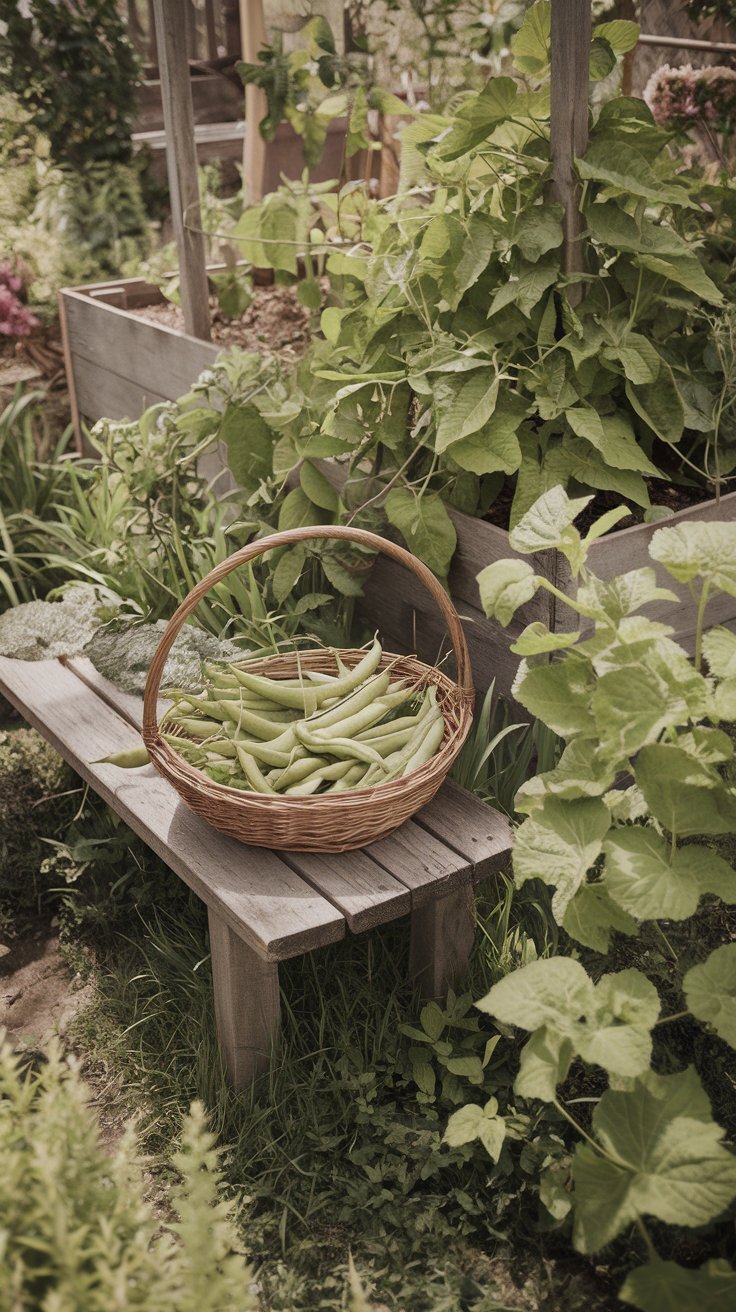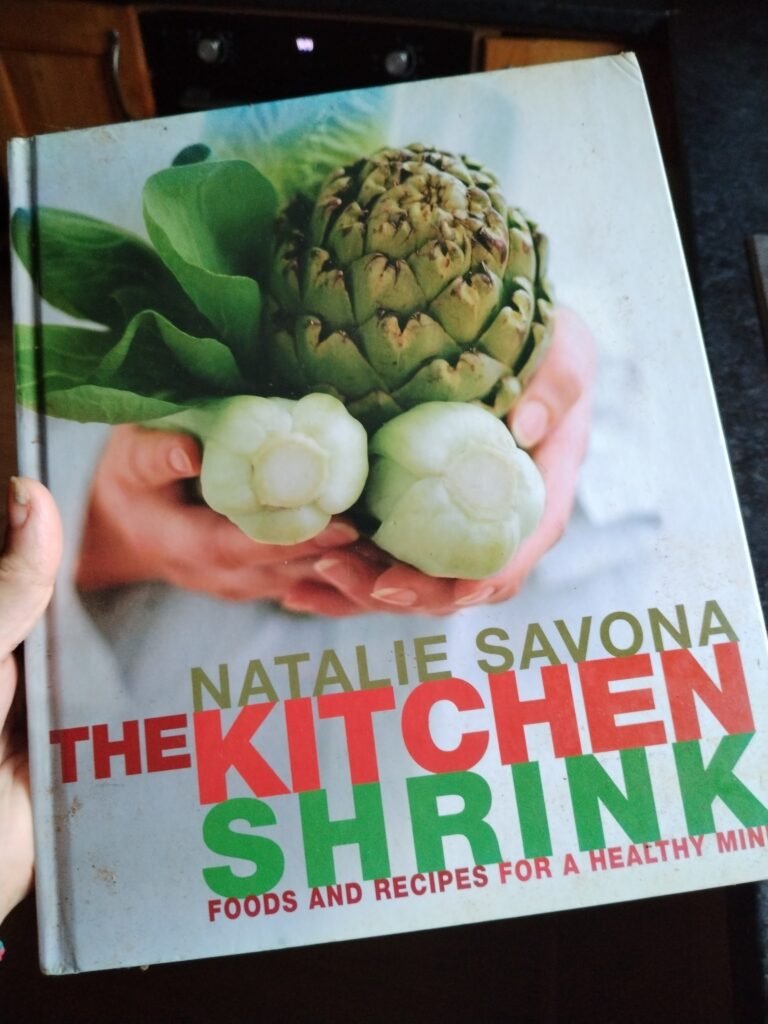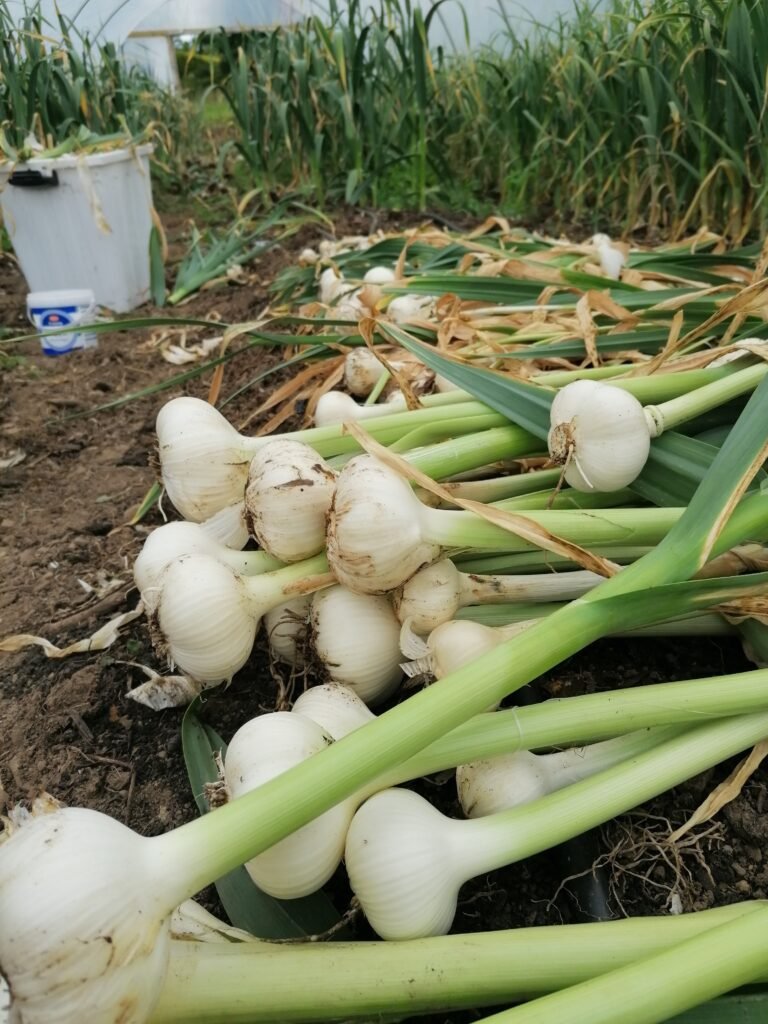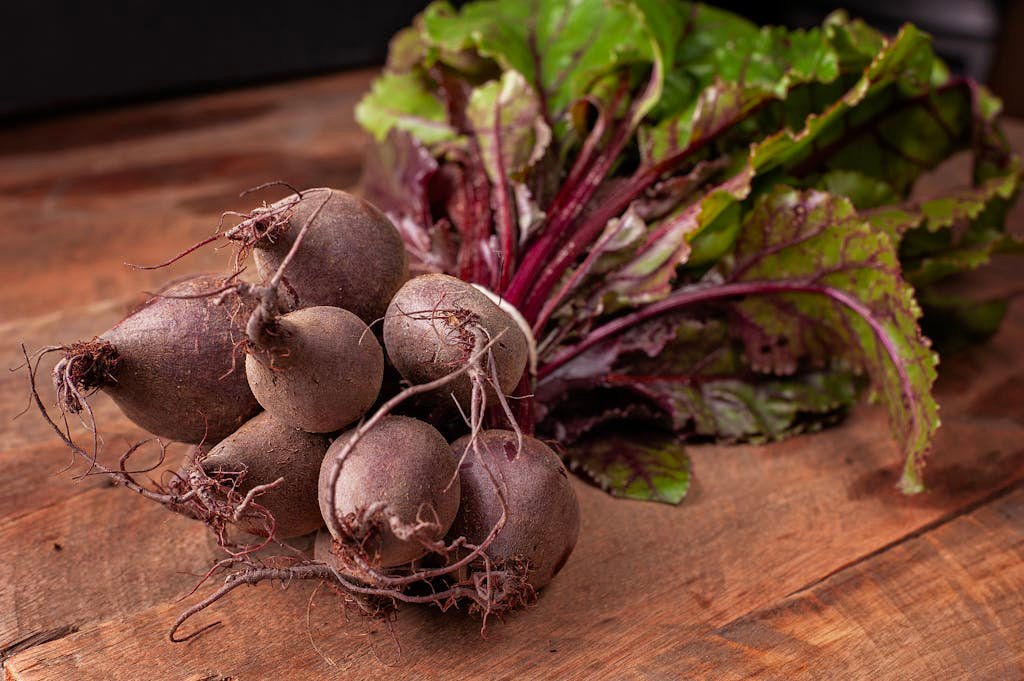
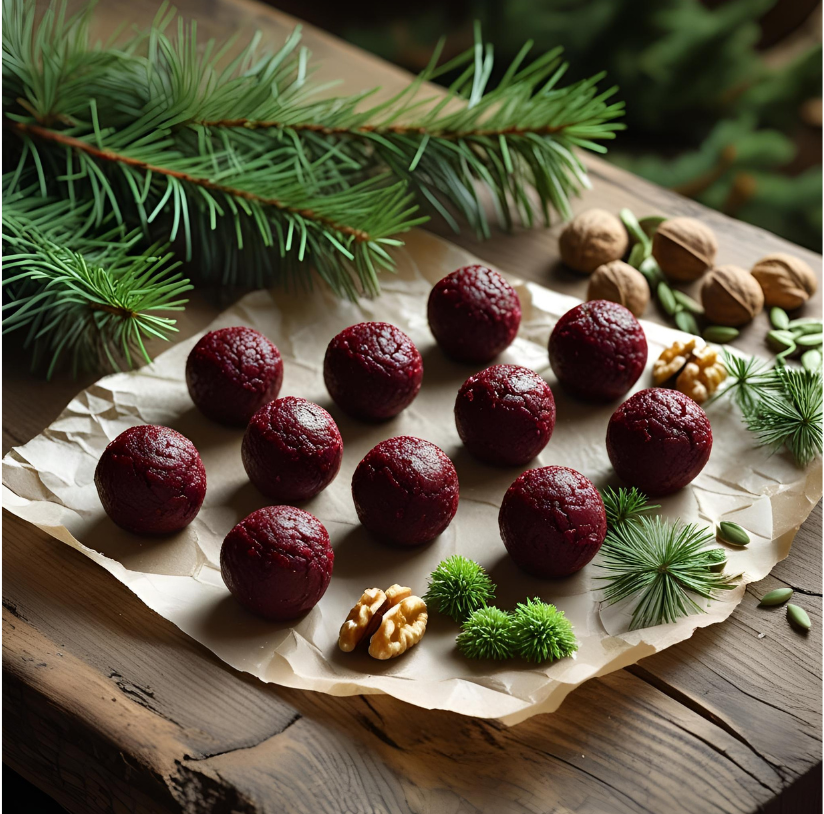
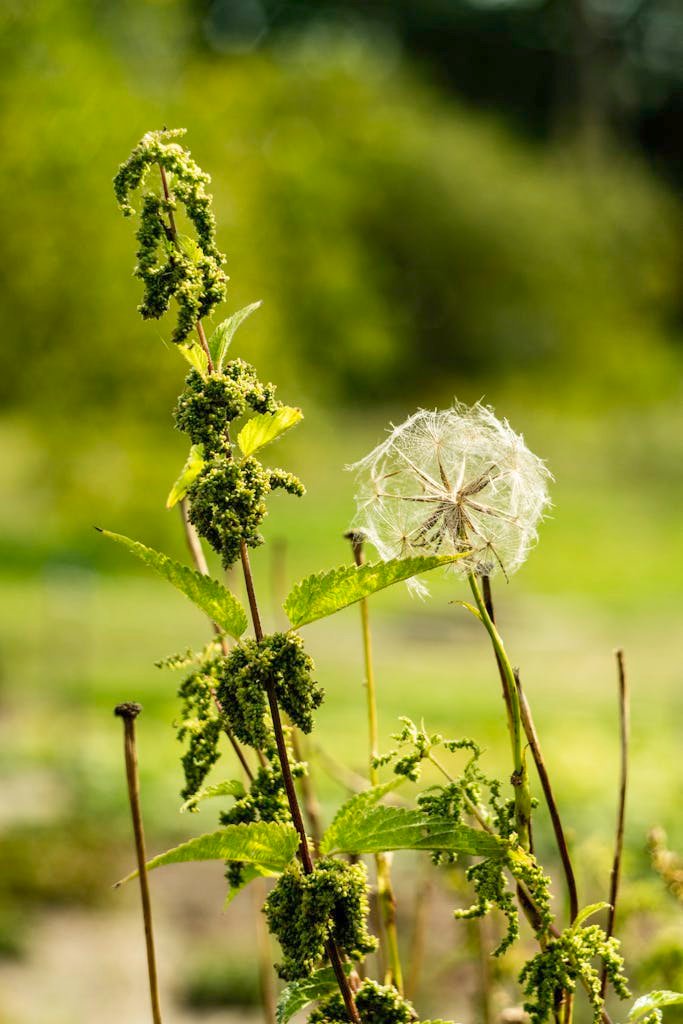
Have you tried beetroot and walnut energy bites? They’re bright, delicious, and full of goodness. But this version is even more special — it uses homegrown beetroot, wild nettle seeds, and citrusy Douglas fir tips you can gather right from the forest. These bites don’t just taste amazing, they connect us to the land around us. And that’s something truly powerful — especially for kids.
When children help gather, grow, or prepare food, they learn that meals don’t just come from a shop. They start to see that food has a story — from the soil to the plate. And that story matters. Foraging for nettle seeds, picking spring fir tips, or digging up beets helps them understand what grows near home, what’s in season, and how nature gives us what we need.
These small moments — hands in the dirt, baskets full of green, noses sniffing citrusy needles — build something deep. A connection. A kind of joy. Plus, they’re learning skills that feed both the body and the heart.
Beetroot and walnut energy bites are perfect for lunchboxes, snacks on the go, or sharing after a walk in the woods. They’re packed with nutrients, color, and a little bit of magic from the wild. And they’re a gentle, tasty way to teach kids (and grown-ups too!) that gathering, growing, and preparing food is a beautiful part of life — one we all belong to.
How to Grow Beetroot at Home (Even in Small Spaces)
Growing beetroot is one of the easiest ways to feel like a garden wizard. It’s fast, forgiving, and doesn’t need much room — perfect for pots, beds, or even a deep window box. Let’s dig into how you can grow your own, step by step.
Best beetroot varieties for home growing (including containers and raised beds)
Some beets are better suited for small spaces and containers. If you’re short on room or growing in raised beds, these varieties are your best friends:
- Boltardy – Slow to bolt and great for early sowing
- Chioggia – A beautiful striped beet with sweet flavor
- Detroit Dark Red – Reliable and perfect for beginners
- Pablo – Compact growth, excellent in containers
- Golden Beet – Milder taste and less mess when peeling
Choose one (or a few!) that suits your space and taste.
Ideal soil, light, and watering conditions
Beets love loose, well-draining soil with lots of organic matter. Think compost-rich, crumbly earth that roots can easily push through. A sunny spot is best — aim for at least 6 hours of sunlight a day. Water regularly, keeping the soil moist but never soggy. Too much water, and the roots get mushy. Too little, and they turn woody. Keep it balanced, and they’ll reward you with sweet, juicy bulbs.
How to succession plant for a steady supply
Succession planting is a clever trick to keep your harvest going. Instead of sowing all your seeds at once, plant a small batch every 2–3 weeks. This way, you won’t end up with a glut of beets all at once — just a steady flow of fresh roots from early summer through autumn. You can even sow a final round in late summer for winter storage.
Harvesting tips and how to tell when your beets are ready
Beets are usually ready to harvest about 8–10 weeks after planting. A good rule of thumb? When the shoulders of the beetroot start to pop above the soil and reach golf ball to tennis ball size, they’re ready to pull. Use a gentle twist and lift motion — no yanking! You can also harvest young leaves for salads anytime.
Companion plants that help your beetroot thrive
Beets get along well with lots of garden buddies. Try growing them alongside:
- Onions – Help deter pests
- Lettuce – Fills in space and shades the soil
- Bush beans – Add nitrogen to the soil
- Chard and spinach – Grow well in similar conditions
- Herbs like dill and mint – May help keep leaf miners away
Avoid planting near pole beans or field mustard, as they don’t play as nicely together.
For our full guide check out this link!
Foraging for Nettle Seeds – A Superfood Hiding in Plain Sight
You’ve likely walked past a treasure trove of nettle seeds without even knowing it! These tiny green gems grow wild all around us, bursting with nutrients and energy. Once you learn to spot them, you’ll wonder how you ever missed them.
When and where to find stinging nettle seeds
Nettle seeds usually show up from late summer into early autumn. Look for tall nettle plants (often found along hedgerows, riverbanks, or woodland paths) that have gone to seed. They’ll be covered in clusters of tiny green or slightly purple seeds that droop in soft tassels. Sunny spots with damp soil are their favorite hangouts.
Identifying male vs female plants (and why females are preferred)
Here’s a handy tip: female nettle plants are the ones you want for seed gathering. They have long, heavy strands of seeds that hang down like little chandeliers. Male plants, on the other hand, produce pollen and have lighter, puffier tassels. If the strands are full and heavy, you’ve found a good patch of female plants — score!
How to harvest seeds safely and sustainably
Nettles do sting, so wear gloves (sturdy ones!) when harvesting. Snip the seeding tops using scissors or pinch them off gently. Always take only a little from each plant, and leave plenty behind for pollinators and wildlife. That way, you’re giving and taking in balance — the forager’s golden rule.
Tips for drying, storing, and using nettle seeds in recipes
Spread the seeds out on a tray or basket in a warm, airy place out of direct sun. After a few days, they’ll dry and fall off easily. Store them in a clean jar in a cool, dark cupboard. They taste nutty and green — perfect for sprinkling on porridge, yogurt, smoothies, or baked goods like your beetroot & walnut energy bites.
Nutritional benefits: adaptogenic, mineral-rich, and energising
Nettle seeds are packed with iron, magnesium, and trace minerals. They’re also considered adaptogens, meaning they help your body handle stress and support steady energy levels. In folk herbalism, they’ve long been prized for nourishing the adrenal system and lifting low moods. A little sprinkle can go a long way toward a good day.

How to Forage and Use Douglas Fir Tips
There’s something magical about walking through the woods in spring — the light is softer, the air smells greener, and if you look closely, the trees are waking up. One tree in particular offers a citrusy surprise you might not expect: Douglas fir. Its tender young tips are bursting with zesty flavor and gentle piney goodness. Here’s how to bring a bit of the forest into your kitchen.
Identifying Douglas fir (vs similar conifers) safely
Douglas firs are not actually true firs, but they do look a lot like them! Look for soft, flat needles that spiral loosely around the twig, not in neat rows like some other conifers. When crushed, the needles give off a sweet, citrus-pine scent, kind of like tangerines and forest air. Their cones hang down and have little three-pronged bracts — like tiny mouse tails sticking out. Make sure to double-check with a local field guide or expert to confirm your ID, especially since some conifers can be toxic.
When and how to harvest the young spring tips
The best time to forage Douglas fir tips is in mid- to late spring, just when the new growth appears. The tips will be a lighter, almost lime-green color, soft to the touch, and easy to pinch off. Harvest sparingly — just the very ends — and only a little from each branch so the tree can keep growing strong.
Flavour profile: why it’s a fantastic citrus substitute
Douglas fir tips have a lovely bright, citrusy taste with hints of grapefruit, lemon zest, and a gentle, foresty sweetness. That zingy flavor makes them a perfect stand-in for orange zest — especially when you want a foraged twist. They’re milder and a bit more aromatic, adding depth without overpowering your recipe.
Culinary uses: teas, syrups, baked goods, and energy bites
These little green wonders are incredibly versatile. Steep them in hot water for a refreshing herbal tea or infuse them into honey or syrup. Finely chop and fold them into cookie dough, shortbread, or cake batters for a woodsy pop. And of course, they shine in energy bites, where their citrusy notes brighten up earthy beetroot and nuts like a burst of forest sunshine.
Storage tips: fresh, dried, or frozen
Fresh tips can be stored in the fridge for up to a week. To keep them longer, dry them gently in a warm spot away from direct sunlight, or pop them in the freezer in a zip-top bag. They lose a bit of brightness when dried, but still taste lovely in tea or baked goods throughout the year.
Why These Ingredients Work So Well Together
Nature has a clever way of giving us just what we need, right where we live. These energy bites are a perfect mix of tasty and good-for-you — and each ingredient plays its own special part. Beetroot helps your blood flow better and gives your body a gentle lift. Walnuts add healthy fats that feed your brain and keep you feeling full. Nettle seeds are a hidden treasure! They’re packed with minerals and are great when you feel tired. And Douglas fir tips? They’re like a splash of forest sunshine — full of vitamin C and fresh, citrusy flavor.
Even better, when you grow or gather these ingredients yourself, they do more than feed your body — they feed your soul. Kids especially learn so much by getting their hands in the soil or picking something wild. It helps them see how food connects to the land and teaches them to respect what nature gives us. Using local or foraged ingredients means fewer food miles, fresher nutrients, and a deeper bond with the place we call home. These energy bites aren’t just snacks — they’re little bites of the world around us, made with care.
How to Make Beetroot & Walnut Energy Bites with Douglas Fir Tips
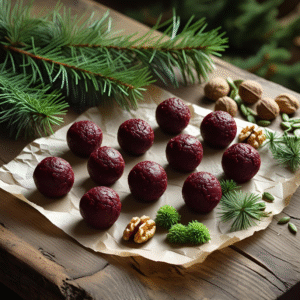
Beetroot & Walnut Energy Bites with a twist of wild
Ingredients
- 150 g Beetroot raw and grated
- 90 g Walnuts lightly toasted
- 50 g Rolled oats or gluten-free oats
- 10 g Medjool dates pitted
- 15 g Raw cacao powder
- 15 g ground flaxseeds or Chia seeds
- 20 g Honey or Maple syrup
- 1 tsp Cinnamon ground
- 1/4 tsp Sea salt
- 10 g Nettle seeds dried
- 1 tsp Vanilla extract
- 1 tbsp Douglas fir tips fresh and finely chopped
Instructions
- Toast the walnuts in a dry pan over medium heat for 3–5 minutes, until fragrant. Set aside to cool.
- In a food processor, blend the Medjool dates into a sticky paste.
- Add the grated beetroot, oats, toasted walnuts, cacao powder, flaxseed, honey (if using), cinnamon, vanilla, and sea salt. Pulse until the mixture comes together into a thick dough.
- Add the Douglas fir tips and nettle seeds, and pulse briefly or fold in by hand to retain some texture.
- Form the mixture into small balls (~25 g each). If the mixture is too sticky, chill it for 10 minutes first.
- Optional: Roll in extra ground walnuts, shredded coconut, or a dusting of cacao powder.
- Chill in the fridge for 30 minutes to firm up.
Notes
- Storage: Keep refrigerated in an airtight container for up to 7 days, or freeze for up to a month.
- Foraging Tip: Use only young, soft Douglas fir tips harvested in spring. Avoid old needles and be sure you have correctly identified the tree.
- Texture Tips: If the mixture is too wet, add 1–2 tablespoons more oats. If too dry, add a splash of water or an extra date.
-
Variations:
- Swap walnuts for pecans or hazelnuts
- Add a handful of shredded coconut for a tropical note
- Stir in cacao nibs or hemp seeds for extra crunch
Conclusion
So there you have it — Beetroot & Walnut Energy Bites with a twist of wild goodness! They’re sweet, earthy, and full of nutrients that keep your body strong and your mind clear. Plus, they’re fun to make and even more fun to share. What makes them truly special, though, is the way they bring together simple, local ingredients that grow all around us.
Whether you’re pulling beets from your garden, gathering nettle seeds along a quiet hedgerow, or plucking fresh Douglas fir tips from a tree on your walk, every part of this recipe invites you to slow down and look around. It’s a gentle reminder that the land we live on gives us so much. When we cook with what we grow or forage, we’re not just making food — we’re making memories, especially when kids get involved.
If this recipe has you excited to try more seasonal, nourishing treats, don’t forget to check out our June Recipe Page where you’ll find more easy ideas using fresh and foraged foods. From garden to kitchen, every bite can be a celebration of the season.
So go ahead — take a walk, gather a few fir tips, and make something simple and delicious. These little bites are a lovely way to enjoy the taste of summer, wherever you are. And once you try them, you might just find yourself looking at your garden or hedgerow with fresh eyes.

